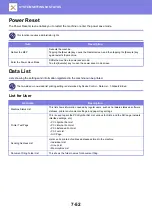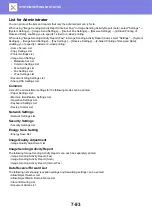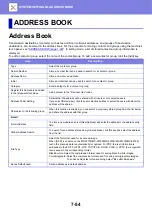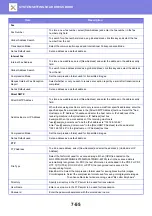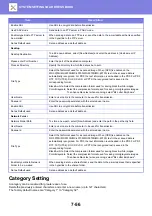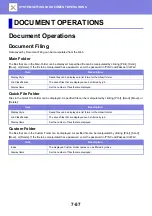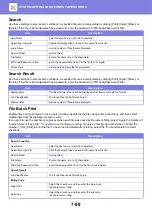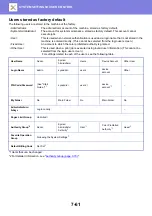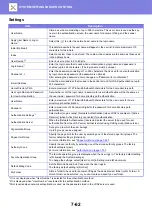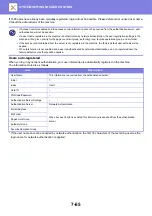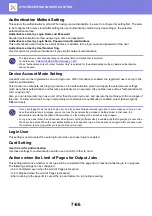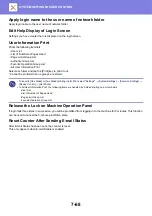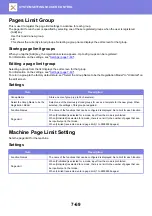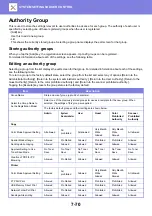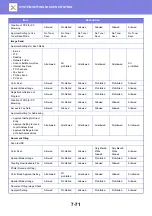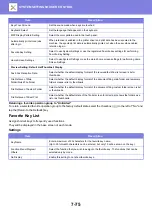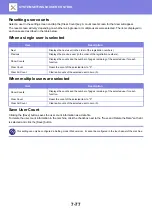
7-63
Custom Index
You can change the custom index name.
Tap the custom index name on the list to edit it.
Delete the previously entered characters and enter a new name (up to 127 characters).
Organization /Group List
This is used to store user groups.
Tap each group name to enter them directly.
Default Settings
User Authentication
This setting enables or disables user authentication and specifies the authentication method.
When the user authentication is enabled, each user of the machine is registered. When a user logs in, the separate
authentication settings apply to the user. This function allows greater control of security and cost management than that
on previous machines.
Even if user information is not stored on the machine, you can directly enter the user information stored in an LDAP
server to log in the machine if necessary. In this case, the authentication information of the "User" being stored as
factory default applies to the login user. For more information, see "
Users stored as factory default (page 7-61)
".
User Authentication
When [User Authentication] is enabled, the authentication screen appears before an operation is carried out in any
mode except the job status screen*.
Log in as an already registered user.
After logging in, you can move freely through the modes.
*The login screen appears when a document filing file is used or when a broadcast transmission is reattempted from the
job status screen.
Authentication Server Settings
Set the location where user authentication is to be enabled.
Local: User authentication by the machine.
LDAP: User authentication by LDAP server.
Active Directory: User authentication by Active Directory.
Default Network Authentication Server Setting
Use this to set the default network authentication server.
When you log into Setting mode (Web version) or send a print job to the machine using user information that is not
registered in the machine, the authentication server is not known. This setting is used to select one of the LDAP servers
registered in the machine as the authentication server.
• For the procedure for storing users, see "
• For details on login procedures when user authentication is enabled, see "
USER AUTHENTICATION (page 1-32)
When login is performed by network authentication using user information that is not registered in the machine, the login user
will be the "User" registered as factory default. For more information, see "
Users stored as factory default (page 7-61)
".




